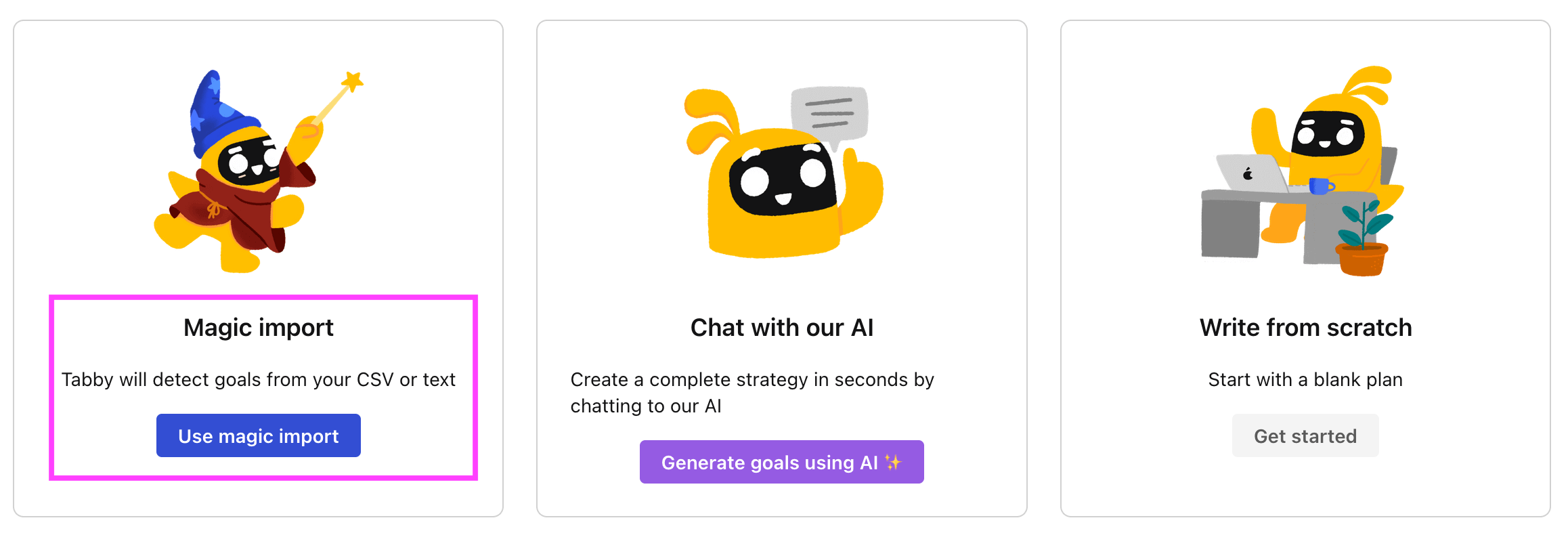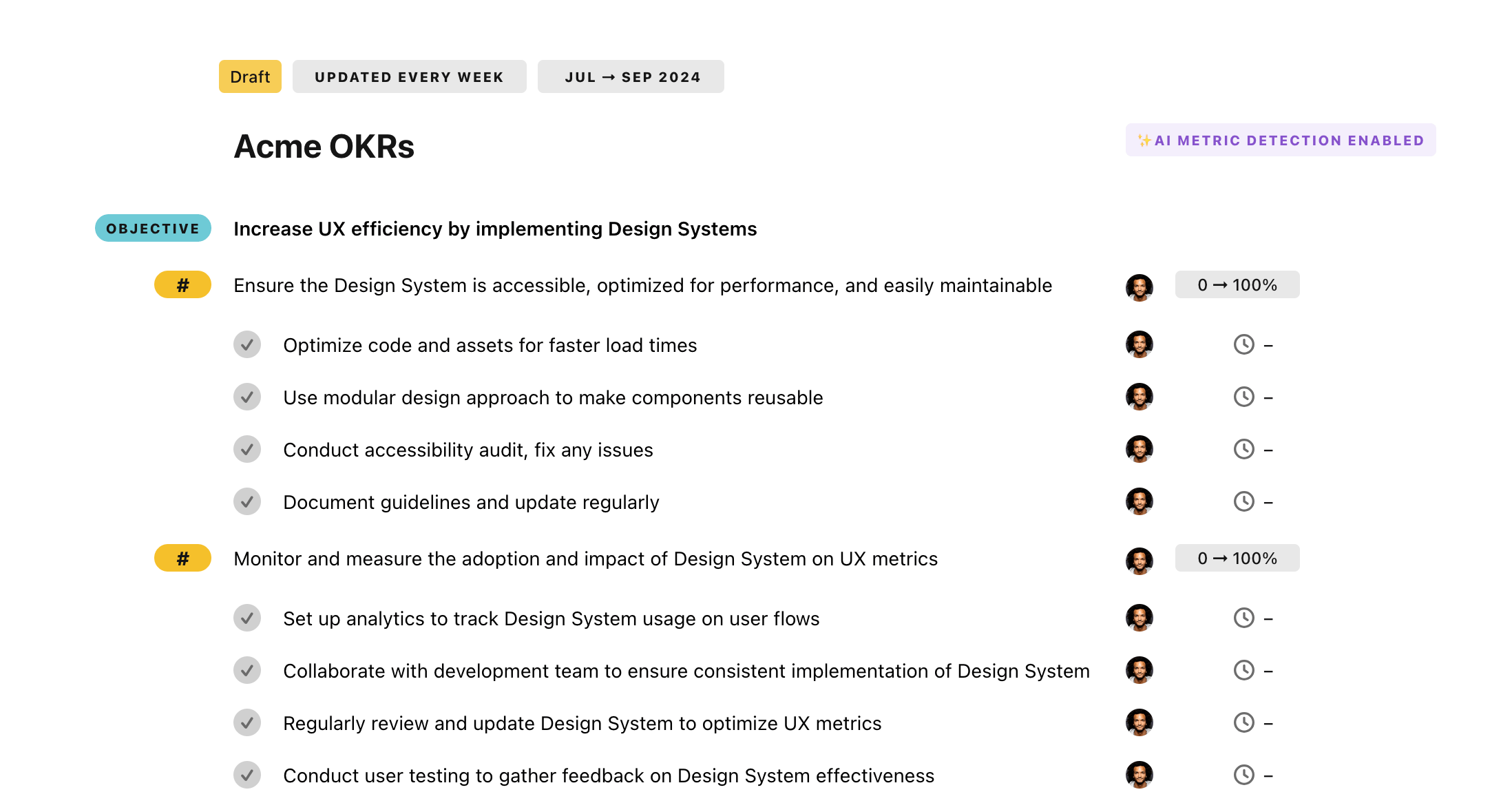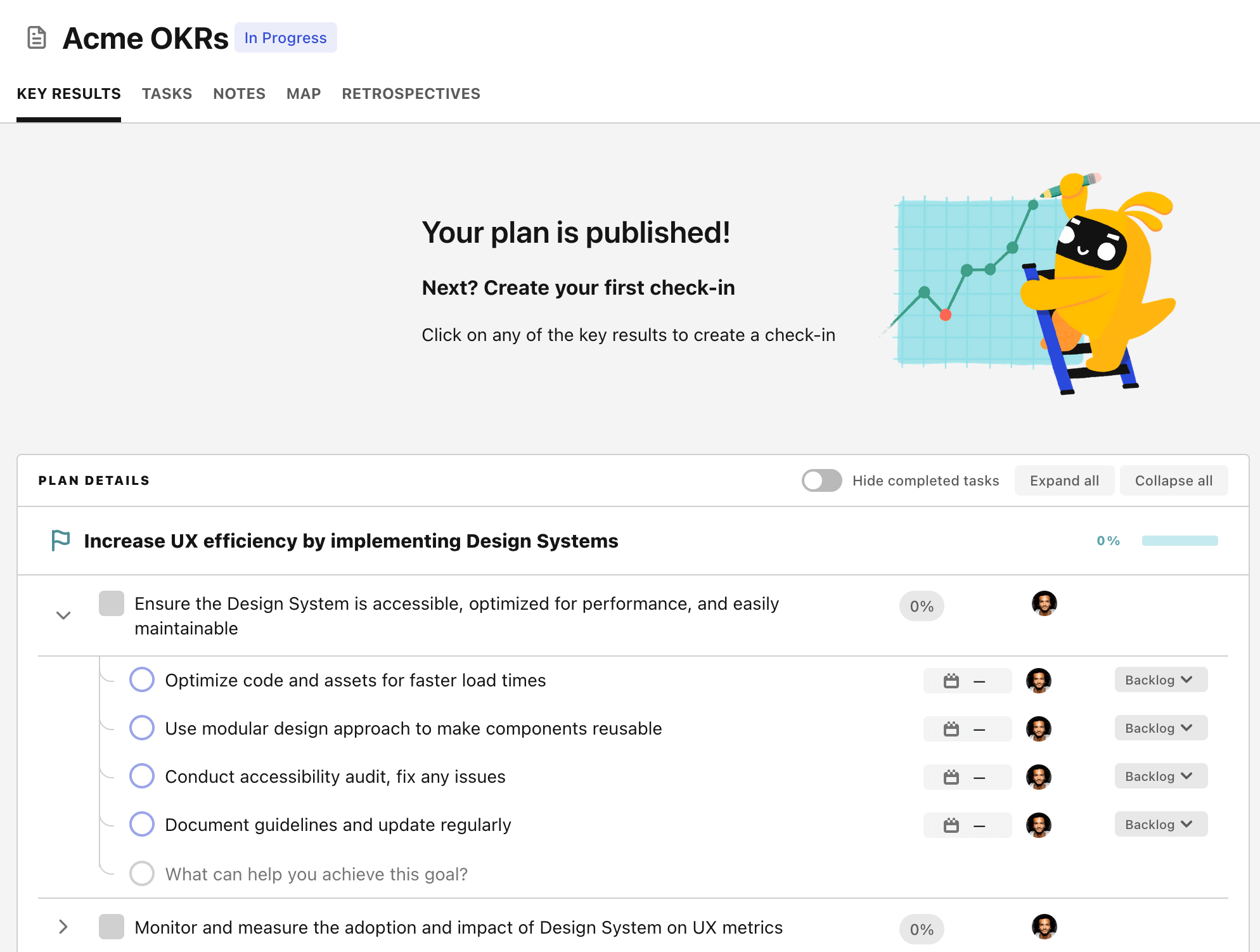OKR template to establish and maintain a comprehensive work diary
Your OKR template
The second outcome involves review and update of the diary on a weekly basis. This is to ensure that all entries are both accurate and comprehensive. Regularly verifying the entries can inform any necessary updates and promote continued verifiability.
The third outcome emphasizes the daily documentation of tasks and achievements. This will require detailing and highlighting individual accomplishments each day. A consistent review and update of the diary entries should be carried out daily to maintain its relevance.
Initiatives laid out to achieve these outcomes include reviewing the work diary before each meeting, creating summary points from diary entries and discussing items in the meetings. A weekly reminder to review the diary, verify its accuracy and adequacy, and making updates as necessary are also necessary actions.
ObjectiveEstablish and maintain a comprehensive work diary
KRUse the work diary for preparing a briefing for every monthly team meeting
Review work diary prior to each meeting
Create summary points from diary entries
Discuss items and action plans in the meeting
KRReview and update the diary weekly to ensure verifiability
Verify accuracy and completeness of diary entries
Update diary entries as necessary
Set a weekly reminder to review the diary
KRDocument daily tasks and achievements in the diary without fail
Detail and highlight individual accomplishments of each day
Consistently review and update achievements in diary daily
Allocate a regular, undisturbed time for journaling daily
How to edit and track OKRs with Tability
You'll probably want to edit the examples in this post, and Tability is the perfect tool for it.
Tability is an AI-powered platform that helps teams set better goals, monitor execution, and get help to achieve their objectives faster.
With Tability you can:
- Use AI to draft a complete set of OKRs in seconds
- Connect your OKRs and team goals to your project
- Automate reporting with integrations and built-in dashboard
Instead of having to copy the content of the OKR examples in a doc or spreadsheet, you can use Tability’s magic importer to start using any of the examples in this page.
The import process can be done in seconds, allowing you to edit OKRs directly in a platform that knows how to manage and track goals.
Step 1. Sign up for a free Tability account
Go tohttps://tability.app/signup and create your account (it's free!)
Step 2. Create a plan
Follow the steps after your onboarding to create your first plan, you should get to a page that looks like the picture below.

Step 3. Use the magic importer
Click on Use magic import to open up the Magic Import modal.
Now, go back to the OKR examples, and click on Copy on the example that you’d like to use.

Paste the content in the text import section. Don’t worry about the formatting, Tability’s AI will be able to parse it!

Now, just click on Import from text and let the magic happen.

Once your example is in the plan editor, you will be able to:
- Edit the objectives, key results, and tasks
- Click on the target 0 → 100% to set better target
- Use the tips and the AI to refine your goals
Step 4. Publish your plan
Once you’re done editing, you can publish your plan to switch to the goal-tracking mode.

From there you will have access to all the features that will help you and your team save hours with OKR reporting.
- 10+ built-in dashboards to visualise progress on your goals
- Weekly reminders, data connectors, and smart notifications
- 9 views to map OKRs to strategic projects
- Strategy map to align teams at scale